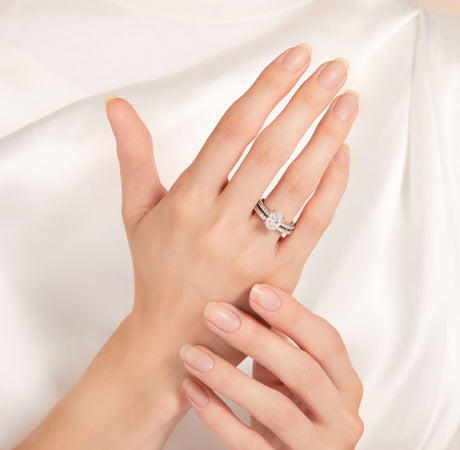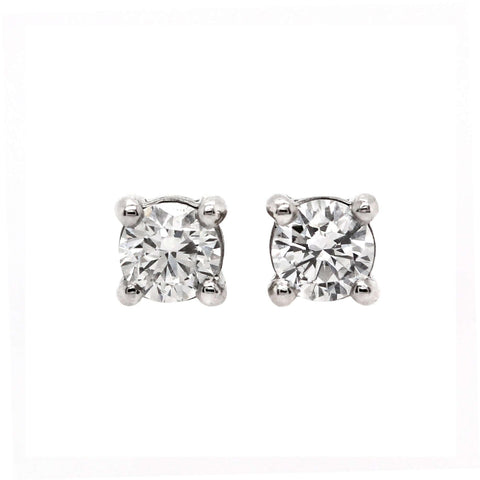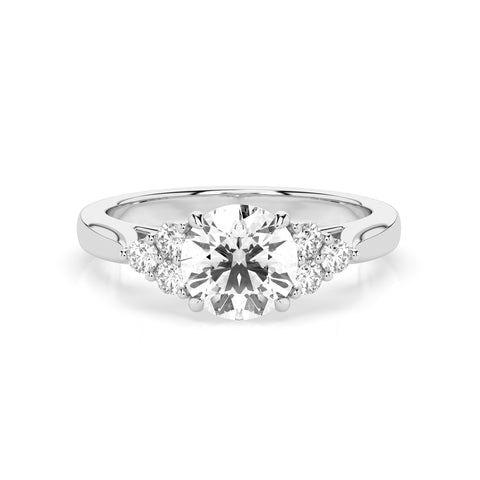From our GIA experts
Round Cut Guide
For those moments that are as meaningful as they are timeless—like an engagement or proposal—choosing the perfect symbol of love is a decision that deserves care and attention. Round cut diamonds have long been cherished for their unmatched brilliance and classic appeal. We’ve created this guide to help couples navigate the enduring beauty of the round brilliant cut as they take the next step in their love story.
Trending now
Round Cut Jewellery
shop all Round engagement ringsRound 4cs
Choosing a Round Diamond: Factors to Consider
When it comes to choosing a diamond that offers timeless brilliance and universal appeal, the round cut stands above the rest. Known for its unmatched sparkle and perfectly symmetrical shape, it remains the most popular diamond cut for a reason. This guide is designed to walk you through the key factors to consider when selecting a round cut diamond, helping you make a confident and well-informed choice.
Ideal Proportions for a Round Cut Diamond
Unlike fancy shapes, round cut diamonds are perfectly symmetrical, so instead of length-to-width ratio, focus is placed on cut proportions—specifically depth percentage (59–63%) and table percentage (54–57%). These dimensions help maximize brilliance and light return. A round diamond with excellent proportions will appear bright, balanced, and full of fire.
Round Cut Guide
Cut quality is the most important factor in a round diamond’s beauty. Round brilliant cuts are the only shape that receives an official cut grade from GIA, ranging from Excellent to Poor. A round diamond with an Excellent cut grade will reflect light evenly, producing maximum sparkle and scintillation. Prioritize cut above all other factors when choosing a round diamond.
Round Colour Guide
Round cut diamonds are excellent at masking colour due to their brilliant facet structure. For a bright, white appearance, consider a colour grade of G or higher, especially for white gold or platinum settings. If you’re choosing yellow or rose gold, H–J colour diamonds can still appear warm and beautiful.
Round Clarity Guide
Round diamonds are also effective at hiding inclusions, particularly near the edges. You can often choose a VS2 or SI1 clarity grade without visible imperfections, especially in smaller carat sizes. Just be sure the stone is eye-clean, meaning flaws aren't visible to the naked eye.
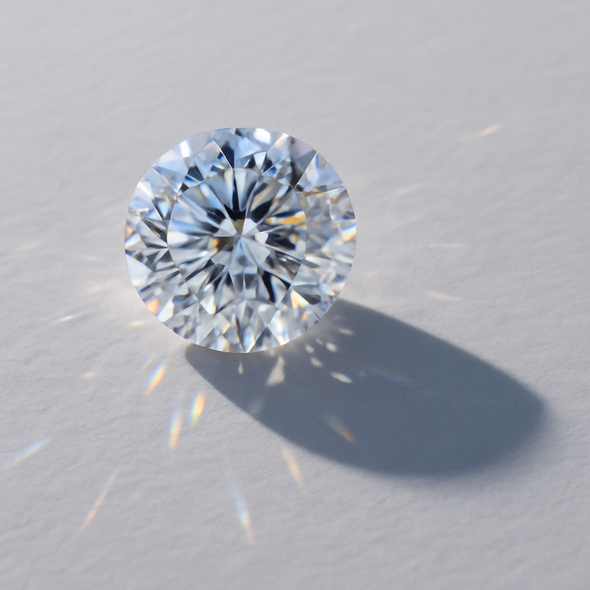
How to choose a round diamond
Buying Guide
The round brilliant cut is the most classic and widely recognized diamond shape. Unlike fancy cuts, it’s not a modified version of another form—rather, it was specifically engineered for maximum brilliance and fire. Featuring 57 or 58 facets arranged in a precise, symmetrical pattern, the round brilliant cut is the benchmark for light performance. Timeless and versatile, it’s the standard against which all other cuts are measured.
-
Length-to-Width Ratio:
Round cut diamonds are perfectly symmetrical by design, with an ideal length-to-width ratio of 1.00. This ensures a true circular shape and even brilliance from every angle.
Facets:
A standard round brilliant diamond features 57 or 58 facets, strategically arranged to maximize light return. This facet structure is what gives round diamonds their signature sparkle and fire.
Bowtie Effect:
Round diamonds do not exhibit a bowtie effect, unlike many elongated shapes. Their symmetrical design and optimized facet pattern ensure consistent brilliance across the entire surface.
-
Cut Quality:
Cut is the most important factor for a round diamond. Always prioritize a GIA Excellent cut grade to ensure maximum brilliance, fire, and scintillation. Well-cut round diamonds reflect light evenly and sparkle from every angle.
Colour and Clarity:
Round diamonds are excellent at masking color and inclusions due to their facet pattern. A colour grade of G or H typically appears bright and white, especially in white metal settings. For clarity, VS2 or SI1 often provides the best balance of quality and value—as long as the stone is eye-clean.
Settings:
Round cut diamonds work beautifully in a wide variety of settings. A classic four- or six-prong solitaire maximizes light exposure, while halo or pavé bands add extra sparkle. The round shape’s durability makes it well-suited to both minimalist and elaborate designs.
-
Solitaire:
A round diamond in a classic solitaire setting is timeless and elegant. The simple band allows the diamond’s symmetry and brilliance to shine as the centerpiece of the ring.
Halo:
A halo of smaller diamonds around a round center stone adds extra sparkle and creates the illusion of a larger diamond. It’s a popular choice for added glamour and visual impact.
Vintage-Inspired:
Round diamonds pair beautifully with vintage-style settings that include milgrain edges, filigree detailing, or side stones. These elements enhance the stone’s classic charm.
Bezel Setting:
A bezel setting surrounds the diamond with a smooth metal rim, offering a sleek, modern look while providing excellent protection—ideal for active lifestyles.
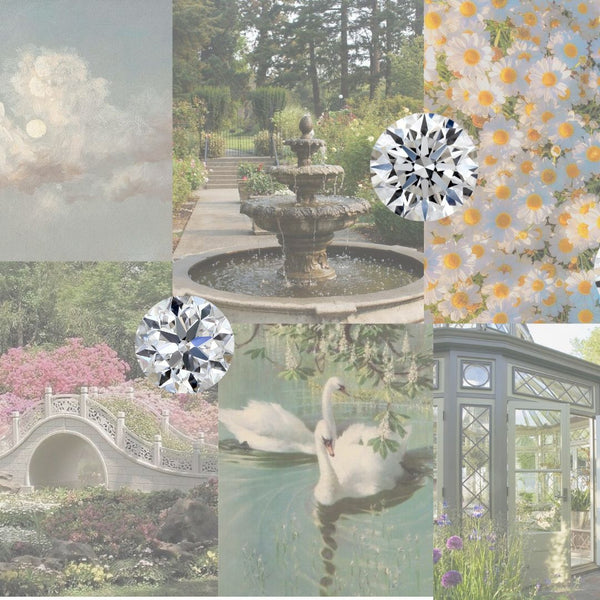
Brilliant Classic
History of Round Cut
The round brilliant cut has a rich history rooted in innovation and timeless appeal. While early round cuts existed for centuries, the modern version was perfected in 1919 by Marcel Tolkowsky, whose mathematical precision transformed the diamond industry. His work defined the ideal angles and proportions to create maximum light return, setting the standard for brilliance. Today, the round cut remains the most popular diamond shape, celebrated for its classic beauty and unmatched sparkle.
Ring Styles & Inspiration
Emily Blunt received a timeless round cut engagement ring from John Krasinski, featuring a 3-carat diamond flanked by tapered baguette side stones. Set in platinum, the ring is both elegant and understated—perfectly reflecting her sophisticated and classic style.
Mila Kunis was proposed to by Ashton Kutcher with a 5-carat round brilliant diamond in a simple platinum solitaire setting. Effortlessly refined, the ring mirrors her modern elegance and preference for timeless, minimalist design.
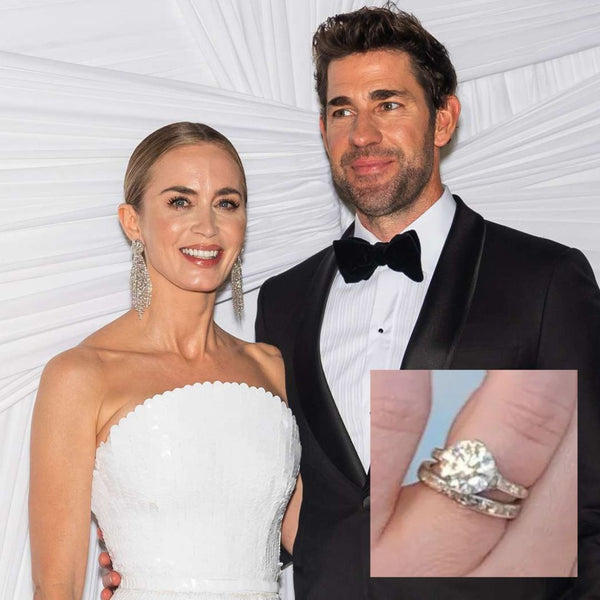
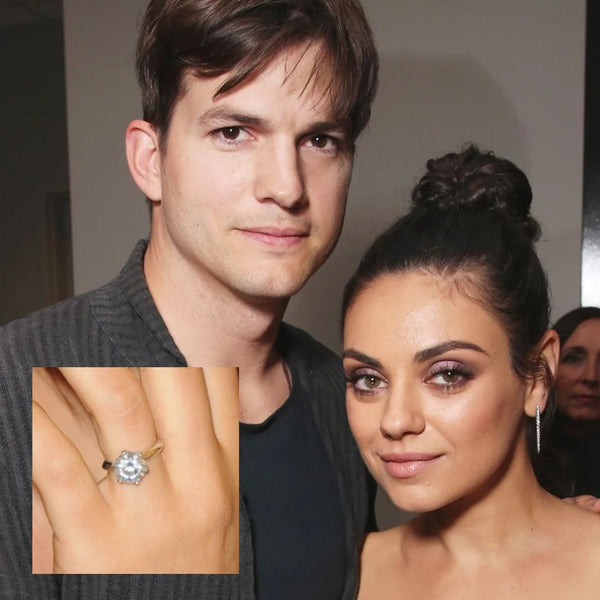
frequently asked questions
Unsure about anything? Find our frequently asked questions.
Can't find the answers your looking for? Our team is on hand from Monday to Friday, 9am - 5pm, or select the button below:
-
Round cut diamonds are the most popular shape due to their exceptional brilliance and timeless appeal. With 57 or 58 precisely placed facets, they reflect more light than any other shape—making them sparkle brilliantly from every angle.
-
Always aim for a GIA Excellent cut grade if possible. Cut has the greatest impact on a round diamond’s sparkle and light performance—more so than colour or clarity.
-
Yes—thanks to their facet pattern, round diamonds are great at masking inclusions and colour tints. You can often choose a slightly lower clarity (like SI1 or VS2) and still have an eye-clean stone.
-
Typically, yes. Round diamonds often cost more because they result in more rough diamond waste during cutting and are in higher demand. However, their brilliance and versatility often make them worth the investment.
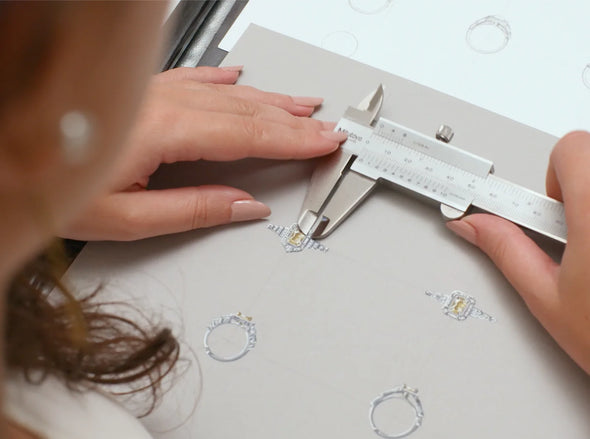
Bespoke Services
Design your own bespoke engagement rings and transform ideas into reality.
We specialise in made-to-order diamond engagement rings. Whether you recreate one of our classic designs or have an idea of your own.
